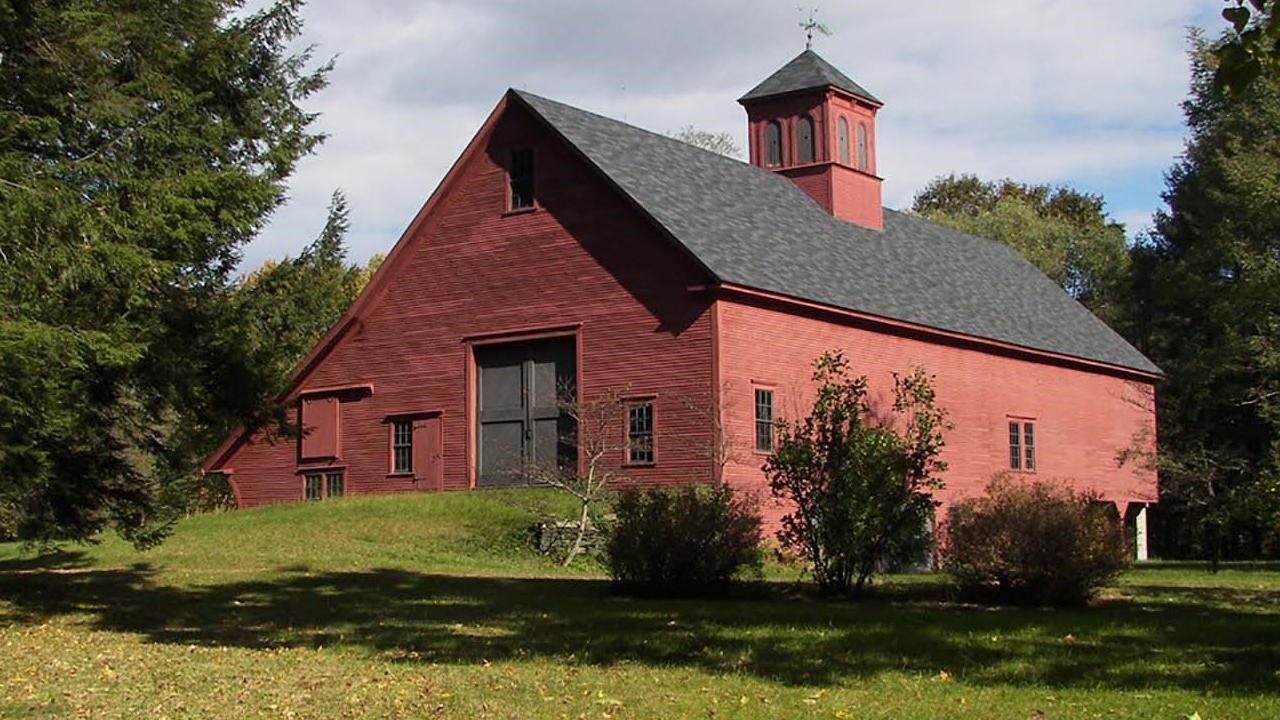Last updated: July 2, 2023
Place
Blow-Me-Down Farm

NPS Photo
Quick Facts
Location:
Cornish, NH
Significance:
Estate of Charles Beaman, Jr. and social hub of the Cornish Art Colony. Among the earliest artists’ communities in the country, the Cornish Colony is best known for modernizing and applying classical European artistic and architectural traditions in the United Stated.
Designation:
National Park, National Register of Historic Places
OPEN TO PUBLIC:
No
Amenities
1 listed
Restroom - Seasonal
| Blow-Me-Down Farm served as an important social and creative center for the Cornish Colony, an influential group of artists, writers, and otherwise creative Americans who spent time in Cornish in the late- nineteenth and early-twentieth centuries. The estate served as the Beaman family’s rural retreat and model farm for nearly 70 years. Charles C. Beaman, Jr. (1840-1900) was a prominent New York City lawyer who had gained prominence in the aftermath of the U.S. Civil War by serving on the Geneva, Switzerland tribunal that settled claims made against the U.S. by Confederate ships. While in Geneva, Beaman met Hettie Sherman Evarts (1852-1917), the eldest daughter of the case's lead attorney. On August 19, 1874, Charles and Hettie married in Windsor, Vermont, not far from the Evarts family estate. n 1882, the family acquired the old Moses Chase Farm in nearby Cornish, NH. This property’s prominent position spread across a pair of rolling terraces wedged between the Connecticut River and Blow-Me-Down Brook. They commissioned architects and local tradespeople to complete the Bank Barn, Chauncey Cottage, Blow-Me-Down Mill, Casino, and Dance Hall. The estate, which they would name “Blow-Me-Down Farm”, eventually included a gristmill, an extensive livestock collection, orchards, gardens, a tennis court, golf course, and a “gymnasium” for the children. The Beamans encouraged friends and acquaintances, many of whom were artists, writers, actors, and otherwise influential urbanites, to join them in Cornish. Over time, this creative social circle came to be known as the Cornish Colony. Charles C. Beaman, Jr. first invited Augustus Saint-Gaudens (1848-1907), the famed sculptor of the Gilded Age, to Cornish in 1885. Several years later, Beaman sold Saint-Gaudens the property that would become known as Aspet, the artist's country home and studio. Blow-Me-Down Farm, and neighboring Aspet, existed at the center of the colony's social and creative life. The dissolution of the Cornish Art Colony occurred gradually beginning in the 1920s. The property continued under Beaman family ownership until 1950 and was eventually purchased by the Saint-Gaudens Memorial, a non-profit operating partner of the Saint-Gaudens National Historical Park. In 2010, 42.6-acres of the original estate was transferred to the National Park Service. Today, a portion of the property is leased to the performing arts organization, Opera North. Blow-Me-Down Farm is open only for ranger-guided tours and special events. |
